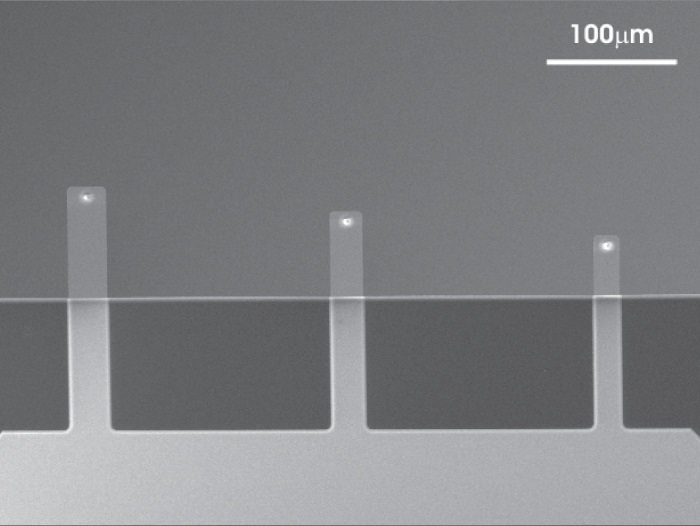Plant-based scaffolds present many advantages over a variety of biomaterials.*
Recent studies explored their potential to be repopulated with human cells and thus highlight a growing interest for their use in tissue engineering or for biomedical applications. However, it is still unclear if these in vitro plant-based scaffolds can modify cell phenotype or affect cellular response to external stimuli.
In the research article “Plant-Based Scaffolds Modify Cellular Response to Drug and Radiation Exposure Compared to Standard Cell Culture Models “ Jerome Lacombe, Ashlee F. Harris, Ryan Zenhausern, Sophia Karsunsky and Frederic Zenhausern report the characterization of the mechano-regulation of melanoma SK-MEL-28 and prostate PC3 cells seeded on decellularized spinach leaves scaffolds, compared to cells deposited on standard rigid cell culture substrate, as well as their response to drug and radiation treatment.*
In their study the authors show that plant decellularization provide soft scaffolds that match the stiffness range of most of the human tissue and modify cell behavior, including drug and radiation response, compared to standard cell culture models. Because of their distinguished features (natural vasculature, low immunogenicity, low cost, relative ease, etc.) and their wide variations in the shape and structures, these scaffolds offer a multi-controllable model with multiple biochemical and biophysical interactions. However, additional studies are required to determine if they could address important architectural and physical challenges of the in vivo tissue environment.
For force measurement, the Young’s Modulus (YM) of the leaf scaffolds were determined using force spectroscopy mode at liquid interface with NANOSENSORS uniqprobe qp-BioAC AFM probes for leaves measurement.*

*Jerome Lacombe, Ashlee F. Harris, Ryan Zenhausern, Sophia Karsunsky and Frederic Zenhausern
Plant-Based Scaffolds Modify Cellular Response to Drug and Radiation Exposure Compared to Standard Cell Culture Models
Frontiers in Bioengineering and Biotechnology (2020) 8:932.
DOI: 10.3389/fbioe.2020.00932
Please follow this external link to read the full article: https://www.frontiersin.org/articles/10.3389/fbioe.2020.00932/full#B27
Open Access: The article “Plant-Based Scaffolds Modify Cellular Response to Drug and Radiation Exposure Compared to Standard Cell Culture Models” by Jerome Lacombe, Ashlee F. Harris, Ryan Zenhausern, Sophia Karsunsky and Frederic Zenhausern is licensed under a Creative Commons Attribution 4.0 International License, which permits use, sharing, adaptation, distribution and reproduction in any medium or format, as long as you give appropriate credit to the original author(s) and the source, provide a link to the Creative Commons license, and indicate if changes were made. The images or other third party material in this article are included in the article’s Creative Commons license, unless indicated otherwise in a credit line to the material. If material is not included in the article’s Creative Commons license and your intended use is not permitted by statutory regulation or exceeds the permitted use, you will need to obtain permission directly from the copyright holder. To view a copy of this license, visit http://creativecommons.org/licenses/by/4.0/.